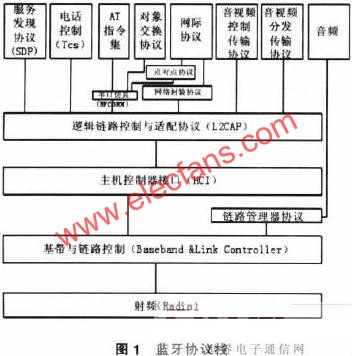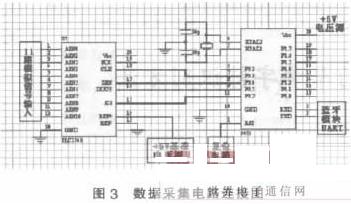1 Introduction
The traditional test system uses cables for information transmission, but cumbersome wiring will bring many inconveniences, especially in some applications, wiring is not allowed or cannot be wired. For example, due to the harsh environment of the industrial control site, high temperature, humidity, vibration, and serious interference from the power grid, especially in the presence of electromagnetic and radio interference, it is necessary to carry out data transmission for continuous, reliable, and complete time Electromagnetic shielding and physical protection; in some industrial environments, such as sports or rotating equipment, wiring is very inconvenient. In order to solve these problems, information transmission should be carried out wirelessly. Looking for a short-distance wireless transmission technology to solve the problem of the on-site control field has become a need.
2 Option
One of the characteristics of wireless access technology is that the standards are not uniform, and different standards have different applications, so that there are hundreds of controversies in wireless access technology. Various technologies compete with each other and complement each other. Table 1 lists the key characteristics and indicators of the existing common wireless access technologies.

It can be seen through comparative analysis that various standards are formulated according to different use occasions and different user needs, and appropriate standards should be selected according to actual needs. In the field of field control cable replacement in the industry, Bluetooth is the most suitable choice.
2 Bluetooth communication principle and protocol hierarchy
Bluetooth technology stipulates 4 physical interfaces Universal Serial Bus USBEIA-232, PC card and Universal Asynchronous Transceiver UART interface. A Bluetooth system is generally composed of radio link control unit link management unit and unit. The indicators of the Bluetooth radio frequency unit are designed in accordance with the standards of the Federal Communications Commission (FCC) of the ISM band with a level of 0 dB, and the frequency band of Bluetooth operation is 2.4 GHz. The system uses frequency hopping and spread spectrum technology. The rate is 1 600h / s, which is increased to 3200h / s when establishing the link, which makes the Bluetooth technology more reliable. Between 2.4 GHz and 2. 48 GHz, 79 frequency points with an interval of 1 MHz are used. Bluetooth The link management unit is responsible for link establishment, authentication, link hardware configuration, and other protocols. The Bluetooth link management unit can discover other remote Bluetooth link management units and communicate with it through the link manager protocol. The road management unit provides sending and receiving data, device number request (inquiry and reporting device ID up to 16 bits), link address query, link establishment, authentication, link mode negotiation and establishment (such as data mode or Voice / data mode), determining the type of frame and power mode settings and other services.
The Bluetooth (BlueLooLh) communication protocol adopts a hierarchical structure, and various Bluetooth devices can be found by people or by automatic query to find other Bluetooth devices, thus forming a Bian slave network (piconeL) or decentralized network (scaLLerneL) to achieve system provision Various functions. The Bluetooth software (protocol) unit is an independent operating system and is not bundled with any operating system. The protocol stack is shown in Figure 1:

(1) Core agreement: It is a key part of the blue talent agreement. Including the baseband part protocol Baseband and other low-level link function baseband / link control protocol; link manager protocol LMP for link establishment, security and control; HCI protocol describing the interface of the Bian machine controller; support for high-level protocols Logical link control and distribution protocol L2CAP for multiplexing, frame assembly and splitting; SDP protocol found by Lancai equipment to provide services, etc .; (2) Cable replacement protocol RFCOMM: It is an emulation protocol in the Lancai baseband protocol Emulate RS-232 control and data signals to provide services for upper-layer protocols; (3) Telephone control protocol TCS: It is a bit-wise protocol that defines control signaling and processing Bluetooth TCS devices for establishing data and voice calls between Bluetooth devices The mobile management process of the group; the AT-Command control command set is a command set defined to control mobile phones, modems and simulations in multi-user mode; (4) and IWerne [relevant high-level protocol: it defines the IWerne [Related PPP, UDP, TCP / IP protocol and wireless application protocol WAP In addition to the above protocol layers, the specification also defines the Bian machine controller interface (HCI), which is a baseband controller, connection controller, hardware The command interface is provided by the status and control registers.
3 Bluetooth wireless measurement and control system design
The Bluetooth wireless test system is shown in Figure 2. There are two design methods for the signal conditioning circuit and the data acquisition circuit of the lower computer: one is that the signal conditioning circuit is composed of a pre-amplifier, a low-pass filter and a signal conversion circuit, and the data acquisition module is composed of a multi-way selection switch MUX and a sample-and-hold S / H and analog-to-digital converter A / D; first, the signal conditioning circuit and data acquisition circuit are processed by a microprocessor or embedded chip.

(1) Measurement front end: The measured quantity can be multiple quantities in the industrial control field, and the corresponding suitable sensor is selected according to the different measured environment and object. The sensor is the front end of the test system and is used to obtain the electrical signal. As the first ring y of the signal input channel, it is also one of the key rings y that determines the performance of the entire test system. Due to the rapid development of sensor technology, various sensors are very rich, and should be selected according to different applications.
(2) Signal conditioning: According to the actual working environment requirements of the measurement and control system, the preamplifier is required to meet high sensitivity, low noise and low drift. For this reason, this system can choose instrument amplifier.
(3) Data collection: Data collection has many performance requirements, which are not described here. Usually considering the cost, most of them are completed by single-chip microcomputer. Figure 3 shows a wiring diagram of a single-chip microcomputer-based data acquisition circuit. This design can measure and control 11 groups of parameters. Of course, there is a software design for the microcontroller.
(4) Bluetooth transceiver module: There are four ways to add Bluetooth function to the device: â‘ Hardware adapter connected to the device's external interface USB or RS-232; â‘¡Integrated Bluetooth function in chip-level design; The Bluetooth function module; â‘£ use the standard slot of the portable device to add a Bluetooth card. The above solutions have obvious advantages and disadvantages of cost to ili time, and also have respective advantages and problems that are not obvious at first glance. In the field of industrial field control, in order to shorten the development time, reduce the development cost, and reduce the risk of development, the first approach is usually adopted, which is to use a USB or RS-232 hardware adapter. A Bluetooth technology platform needs to be selected here, and there are already many such Bluetooth chips in front of the ili field.

(s) Software design of the host computer: the host computer is the nerve center of the test system, which makes the entire system an intelligent organic whole. Its important task is to control the data acquisition system for data collection and storage according to a predetermined program under the guidance of the software, perform arithmetic analysis and processing on the collected data, and output, display, record, and print in an appropriate form; at the same time, the entire The system performs real-time monitoring and the system's human-computer interaction b. Function, so that the lower computer can test various parameters according to the control of the front desk.
The host computer software Bian is composed of Bluetooth control module, data processing module, man-machine world and module. The main functions of the three modules are as follows:
(1) Bluetooth control module: Bian is responsible for the initialization of local Bluetooth devices, finding remote Bluetooth devices, obtaining various parameters of Bluetooth devices, establishing and disconnecting links between Bluetooth devices, and transparently receiving and sending data.
(2) Data processing module: Separate the serial data stream from the Bluetooth device according to the channel, convert the format of the data, and store it in the storage unit in a certain form, so that the module can be called by the human-machine world.
(3) Human-machine interface and module: Provide the graphics interface, capture the user's control instructions and perform corresponding operations, display the data processed by the data processing module in a certain form, and realize the system's human-computer interface 4. function.
4 Conclusion
According to the requirements of system design, the author selected a Bluetooth module for testing. The test results show that the Bluetooth hardware and software interface is transparent and friendly to the actual application environment, and the software is easy to implement. The author believes that the reliability and effectiveness of applying Bluetooth technology to data transmission and signal transmission in the field of industrial control is the key to the design.
Apple Watch Screen Protector,Smart Watch Screen Protectors,Flexible Watch Screen Protector,Soft TPU Watch Protector
Guangdong Magic Electronic Limited , https://www.magicmax.cc
